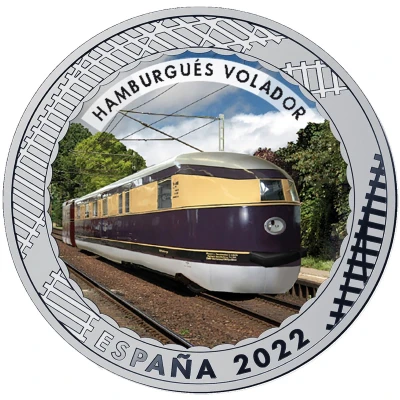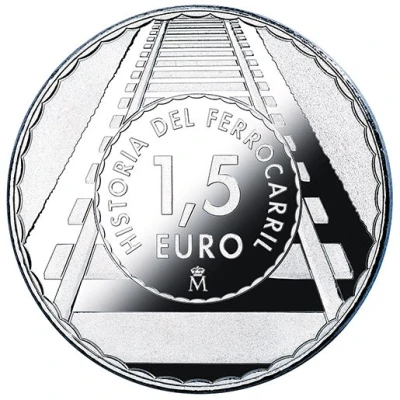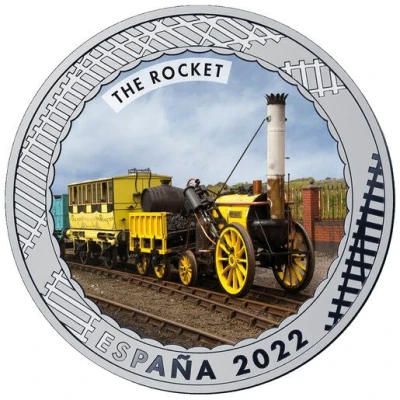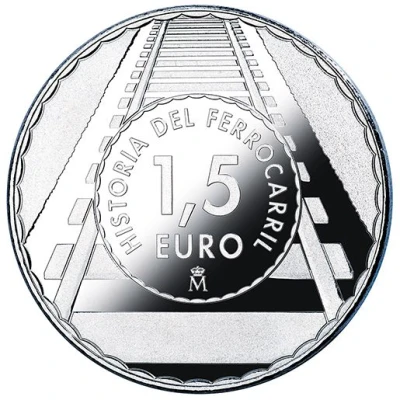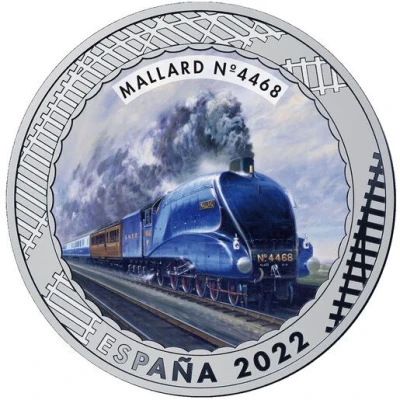


© Real Casa de la Moneda
1.5 Euro Mallard
2022 year| Copper-nickel (75% copper, 25% nickel) | 15 g | 33 mm |
| Issuer | Spain |
|---|---|
| King | Felipe VI (2014-date) |
| Type | Non-circulating coin |
| Year | 2022 |
| Value | 1.5 Euro 1.50 EUR = USD 1.65 |
| Currency | Euro (2002-date) |
| Composition | Copper-nickel (75% copper, 25% nickel) |
| Weight | 15 g |
| Diameter | 33 mm |
| Shape | Round |
| Technique | Milled, Coloured |
| Orientation | Medal alignment ↑↑ |
| Updated | 2024-10-07 |
| Numista | N#325709 |
|---|---|
| Rarity index | 92% |
Reverse
Series and face value inside a central circle. Outside the central circle, an image of a railway track.
Script: Latin
Lettering:
HISTORIA DEL FERROCARRIL
1,5 EURO
M
Translation: History of railways
Edge
Plain
Comment
For the year 2021, since the European Year of the Rail and the 80th Anniversary of Renfe are celebrated, the FNMT-RCM issues a collection of 20 coins dedicated to the History of the Railways. This series reproduces a selection of trains and locomotives that have been relevant throughout its history.Mallard 4468: In 1935, the British operating company London and North Eastern Railway (LNER) decided to build a silver-painted locomotive to haul a train, likewise painted in silver, to mark the 25th Anniversary of the Coronation of George V. Named The Silver Jubilee, the train was to cover the London-Newcastle route faster than ever before. Its resounding success led to the manufacture, between 1936 and 1938, of 34 A4-model locomotives, used to haul the Coronation and the West Riding Limited before being put into general service at a later date. The A4-model, produced on the back of a large A3 Superpacific series, would feature the improvements introduced by André Chapelon in France, such as wider steam pipes and exhaust regulator valves. Some of them were even fitted with a Kylchap double exhaust. The work of Nigel Gresley, these steam locomotives were, in a word, modernist in design, streamlined and highpowered. Working pressure was 17.5 kg/cm2; tensile stress, 16,326 kg; and they featured three low-expansion cylinders. As a result, they were able to reach a speed of over 160 km/h. One of them, the 4468 Mallard, would go down in history as having broken the steam traction speed record. Built in Doncaster in 1938, the 4468 Mallard was 21 metres long; it weighed 165 tonnes, including the tender; and was painted in garter blue. On July 4 1938, during a trialling session to test the brakes, it reached a speed of 202.7 km/h at Stoke Bank, situated between Grantham (Lincolnshire) and Peterborough (Cambridgeshire), for approximately 400 metres. The 4468 Mallard was withdrawn from service in 1963 and subsequently preserved by the British Transport Commission. Later, in 1975, it came to form part of the collection at the National Railway Museum in York.
Interesting fact
The Mallard 4468 coin is part of a series of commemorative coins issued by the Royal Mint of Spain to celebrate the 50th anniversary of the country's transition to democracy. The coin's design features an image of a mallard duck, which symbolizes the return of democracy to Spain. The coin's unique design and historical significance make it an interesting and valuable collector's item for coin enthusiasts.
Price
| Date | Mintage | VG | F | VF | XF | AU | UNC |
|---|---|---|---|---|---|---|---|
| 2022 M | 7000 | - | - | - | - | - | - |
Values in the table are based on evaluations by sales realized on Internet platforms. They serve as an indication only for 1.5 Euro (Mallard 4468) 2022 coin.
